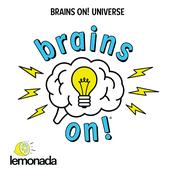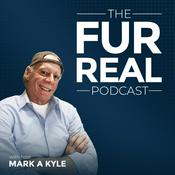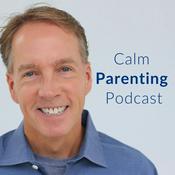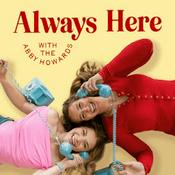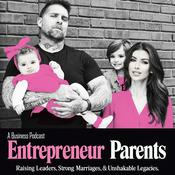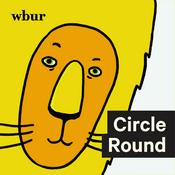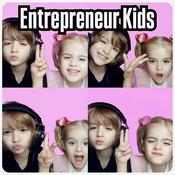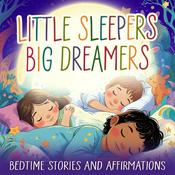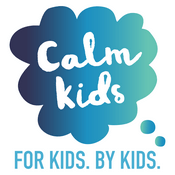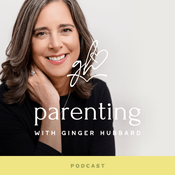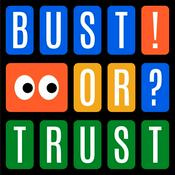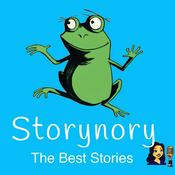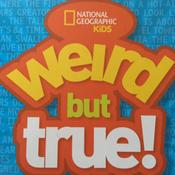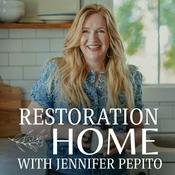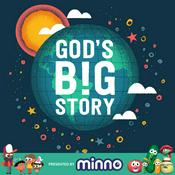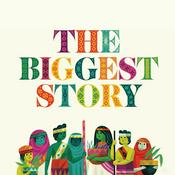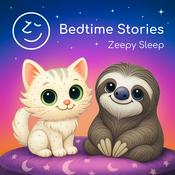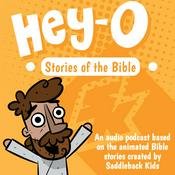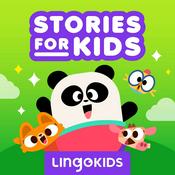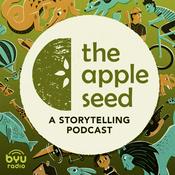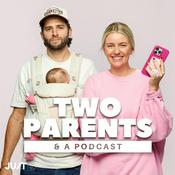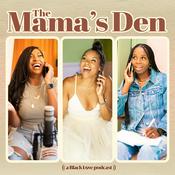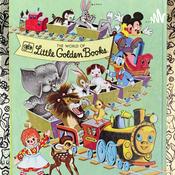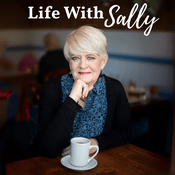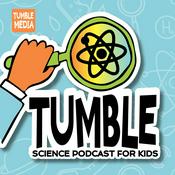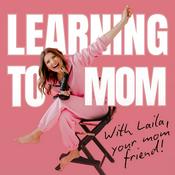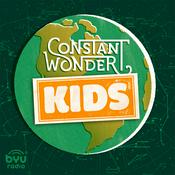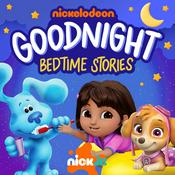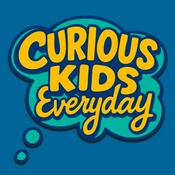48 episodes

Trust Your Instinct: Quieting the Sleep Training Noise feat. Gabrielle Ferrara | #47
12/17/2025 | 31 mins.
Why is "normal" infant sleep so often labeled as a problem needing medical intervention? Gabrielle Ferrara began her professional life dedicated to mental health counseling and social work, holding a Master's in Social Work and licensure as a clinical social worker in both New Jersey and Florida. She initially planned to return to her full-time therapy job after having her son, never anticipating motherhood would completely uproot her career path. When her son's personal sleep journey began to get "a little hairy" at four months old, she discovered Greer's work. Listening to the resources gave her the language and the tools to quiet the intense pressure and noise she was receiving about sleep training, allowing her to trust her intuition about what her baby needed. This transformative personal experience motivated her to enroll in the first cohort of the Nurture Neuroscience practitioner program. She saw this as an opportunity for self-education and to be among other like-minded professionals and parents with similar values, with the hope of translating the knowledge into a professional career. In her consults, she found her primary job was offering education and reassurance to parents who constantly ask, "Is what my baby doing normal?". Her own path has been challenging, as her son has nearly every medical red flag or sleep disruptor, including reflux, oral ties, low ferritin, and snoring. She has faced significant pushback from the medical system, which often promotes a medicalized behaviorist approach, prescribing "self soothing" even when physical symptoms are present. Gabrielle emphasizes that for families facing complex sleep issues, responsive co-sleeping or bedsharing is often the only way to get enough sleep to function. She uses her combined therapeutic and personal experience to help parents navigate these complexities and balance their child's medical needs with their nurturing needs. Key Takeaways ● The majority of consult work involves reassuring parents that their baby's needs and behaviors are developmentally normal. ● We must reject the overwhelming mainstream messaging that sleep training is the only viable solution for infants. ● It is crucial to normalize the grief parents feel when the reality of infant sleep doesn't match cultural expectations. ● Some families rely on responsive co-sleeping or bedsharing as the only practical solution while addressing underlying health issues. ● Parents need support to stand confidently in their attachment-based choices against external pressure and medical pushback. Join The Nurture Neuroscience Practitioner Certification Join our February 2026 Program: https://nurture-neuroscience.com/professional-certification-sales-page Resources ● Website: https://www.gabrielle-ferrara.com ● Instagram: @nurtured.mom.nurtured.baby https://www.instagram.com/nurtured.mom.nurtured.baby Guest Bio: Gabrielle Ferrara is a Nurture Neuroscience Practitioner and Consultant. She holds a Master's in Social Work (MSW) and is a Licensed Clinical Social Worker (LCSW) in New Jersey and Florida. Ready to Connect with Greer? "Nurture Neuroscience" Website: https://www.nurture-neuroscience.com/ Instagram: https://www.instagram.com/drgreerkirshenbaum/ LinkedIn: https://www.linkedin.com/in/greerkirshenbaum/ FREE GUIDE, "Nurture Your Baby's Stress": https://www.nurture-neuroscience.com/nurture-your-babys-stress FREE GUIDE, "Manage the Stressors & Triggers of Parenting": https://www.nurture-neuroscience.com/manage-the-stressors-of-parenting Order "The Nurture Revolution" Book: https://www.nurture-neuroscience.com/the-nurture-revolution

Discipline and Development: The Zero to Three Guide feat. Dr. Vanessa Lapointe | #46
12/10/2025 | 34 mins.
Why is traditional discipline actually causing anxiety and behavioral problems in our children? Dr. Vanessa Lapointe began her career as a practicing psychologist and mother, having been trained in a behaviorist approach that taught her to squash any unwanted behavior to make it stop. She quickly noticed a profound mismatch between this training and the reality of the children coming into her clinic. Dr. Lapointe observed that many referrals were anxiety-based, and it seemed that the very discipline methods being employed by parents were actually causing the anxiety and leading to challenging behaviors. This realization prompted her to conduct a deep dive into child development, including studying the work of Gordon Neufeld. Her key transformation involved moving away from punishment-focused methods, recognizing that the "downstream fallout" from harsh discipline creates more disruption in children's lives than a compassionate approach. Dr. Lapointe now operates from the developmentalist perspective, focusing on the antecedent—what happens in the environment before a behavior occurs—rather than the consequence. She explains that because babies' brains are immature and lack the necessary wiring for self-regulation and impulse control, their "bad behaviors" are actually developmentally appropriate expressions of overwhelm or excitement. Dr. Lapointe emphasizes that we must approach parenting with compassion, humanity, and heart, ensuring our children can grow up in the way nature intended, without having to recover from their childhood. Key Takeaways ● Traditional behaviorist discipline, which focuses on stopping behavior, often leads to negative outcomes like anxiety and continued disruption later in life. ● Focus on the antecedent (the environment and stressors before the behavior) rather than the consequence (punishment) to nurture healthy development. ● Misbehavior does not exist; all challenging behavior is simply communication of a child's needs or an underlying stress response. ● Boundaries for babies should define how we hold ourselves within, not how we keep the baby out or make them wait. ● Compassionate parenting gives us the opportunity to heal our inner child by retemplating our own childhood experiences and emotional reactions. Join The Nurture Neuroscience Practitioner Certification Join our February 2026 Program: https://nurture-neuroscience.com/professional-certification-sales-page Resources ● Books: ○ Discipline Without Damage ○ Parenting Right From the Start ○ https://drvanessalapointe.com/child-discipline-books ● Website: https://drvanessalapointe.com ● Facebook: https://www.facebook.com/drvanessalapointe ● Instagram: @dr.vanessalapointe https://www.instagram.com/dr.vanessalapointe ● X (Twitter) https://x.com/DrVlapointe Guest Bio: Dr. Vanessa Lapointe is a mom, parenting educator, best-selling author, international speaker, and a regularly invited media guest. She holds a doctoral degree in psychology, and practiced as a psychologist for nearly 20 years, before devoting her full-time energy to connecting with parents and other "big people" around the globe in 2023. Founder of The North Star Developmental Clinic, Dr. Vanessa has long been supporting families and children in her developmental clinic alongside her team, and has previous experience in community mental health and the school system. Dr. Vanessa is known for bringing a sense of nurturing understanding and humanity to all of her work. Her passion is in walking alongside parents, teachers, care providers, and other big people to really see the world through the child's eyes. She believes that if we can do this, we are beautifully positioned to grow up our children in the best possible way. Ready to Connect with Greer? "Nurture Neuroscience" Website: https://www.nurture-neuroscience.com/ Instagram: https://www.instagram.com/drgreerkirshenbaum/ LinkedIn: https://www.linkedin.com/in/greerkirshenbaum/ FREE GUIDE, "Nurture Your Baby's Stress": https://www.nurture-neuroscience.com/nurture-your-babys-stress FREE GUIDE, "Manage the Stressors & Triggers of Parenting": https://www.nurture-neuroscience.com/manage-the-stressors-of-parenting Order "The Nurture Revolution" Book: https://www.nurture-neuroscience.com/the-nurture-revolution

Why Nasal Breathing is Essential for Early Development feat. Dr. Shereen Lim | #45
12/03/2025 | 33 mins.
How does optimal breathing and jaw development impact your child's sleep, mood, and ability to thrive? Dr. Shereen Lim, originally a general dentist for 26 years, first delved into the world of sleep apnea due to her husband's persistent snoring. Her initial focus was on dental devices for adults, but this quickly shifted when she wondered why children's jaws weren't helped to grow properly from the start. She came across research indicating that palate expansion could reduce snoring and obstructive sleep apnea in children. This led her to pursue early interceptive orthodontics. However, when she spoke to a pioneer in sleep medicine about palate expansion, she was told she was too late, which prompted a critical realization: form follows function. Her attention then shifted entirely to the earliest years of life, focusing on how to ensure a child's tongue and other oral muscles work well to promote optimal jaw development. Dr. Lim stresses that good airway health is defined by nasal breathing 24/7 and optimal jaw development, which serves as the foundation for thriving health and vitality across the ages. She emphasizes that sleep and breathing problems should be viewed as family health issues, often leading to attachment difficulties in infants and behavioral problems in older children, ultimately impacting the entire household. Key Takeaways ● Airway health is defined as promoting nasal breathing 24/7 and optimal jaw development through effective oral function. ● Snoring, mouth breathing, and a lack of silence during sleep are signals that airflow difficulties may be present, leading to unrestorative sleep. ● Breastfeeding, with optimal latch mechanics, is crucial because it acts as nature's palate expander, helping develop the jaws forward and wide. ● We must consider the outer borders of the airway—the jaw structures—not just tissue removal, to increase airflow and space for the tongue. ● Poor breathing quality during sleep can increase the risk of behavioral, learning problems, anxiety, and separation anxiety in children. Join The Nurture Neuroscience Practitioner Certification Join our February 2026 Program: https://nurture-neuroscience.com/professional-certification-sales-page Resources ● Book Breathe, Sleep, Thrive. https://breathesleepthrivebook.com ● Website: https://www.drshereenlim.com.au ● Facebook: https://www.facebook.com/drshereenlim ● Instagram: @dr.shereenlim https://www.instagram.com/dr.shereenlim Guest Bio: Dr Lim is a Perth, Australia, based dentist with a postgraduate diploma in dental sleep medicine from the University of Western Australia. She has been involved in the team management of snoring and obstructive sleep apnea for over a decade. Dr Lim is dedicated to promoting airway health from infancy as an alternative approach to minimize the development of these problems, and is author of the book "Breathe, Sleep, Thrive: Discover How Airway Health Can Unlock Your Child's Greater Health, Learning and Potential." Her work in private practice is restricted to tongue tie management from infancy to adulthood, early interceptive orthodontics and myofunctional therapy. Ready to Connect with Greer? "Nurture Neuroscience" Website: https://www.nurture-neuroscience.com/ Instagram: https://www.instagram.com/drgreerkirshenbaum/ LinkedIn: https://www.linkedin.com/in/greerkirshenbaum/ FREE GUIDE, "Nurture Your Baby's Stress": https://www.nurture-neuroscience.com/nurture-your-babys-stress FREE GUIDE, "Manage the Stressors & Triggers of Parenting": https://www.nurture-neuroscience.com/manage-the-stressors-of-parenting Order "The Nurture Revolution" Book: https://www.nurture-neuroscience.com/the-nurture-revolution

I'm Right, You're Stupid: Healing Adult Sibling Wounds feat. Jessica Marriot and Dr. Bluma Sapir | #44
11/26/2025 | 50 mins.
Why is healing the complex relationships between adult siblings a universally overlooked area in mental health? Jessica Marriot and Dr. Bluma Sapir, who are sisters, were estranged and hated each other for their entire lives until the pandemic prompted a change. Their relationship healing began slowly on Zoom. This unusual process led to a realization: adult sibling healing is a universally overlooked population in the mental health field, with everything else seeming to exist except for it. This observation reinforced their decision to document their journey and write their book, I'm Right, You're Stupid: Growing up your sibling relationship. Dr. Bluma Sapir, a clinical psychologist, provided valuable background, enabling them to dive deep into existing research, reinforcing their path to help others. They discovered that their deep pain stemmed from origin stories where family legacy burdens, such as the generational pattern of one sibling being the "black sheep" and the other the "favorite," played a defining role. Both sisters came to understand that they had played dual roles, acting as both the victim and the abuser for each other. The healing process involved using neuroscientific tools, like deep breathing and grounding exercises derived in part from Polyvagal Theory, to co-regulate themselves. Through this hard work, they stress the importance of teaching repair and perspective-taking, emphasizing that true healing focuses on authenticity (what was felt) rather than accuracy (what was precisely remembered). Ultimately, this repair offered a "wider lens" on their purpose, provided clarity in other relationships, and helped rewire their nervous systems toward calm and security. Key Takeaways ● Adult sibling healing is recognized as a universally overlooked population in the mental health field. ● The relationship with a sibling is often the first relationship where we learn how to get along or not get along with others. ● The roots of sibling conflict often stem from family legacy burdens, where generational roles like "black sheep" or "favorite" are passed down. ● When managing sibling conflict, parents should serve as regulators and co-regulators, avoiding the urge to choose sides or let children "figure it out". ● Healing requires focusing on authenticity—hearing what the other person experienced—rather than arguing over the factual accuracy of past events. Join The Nurture Neuroscience Practitioner Certification Join our February 2026 Program: https://nurture-neuroscience.com/professional-certification-sales-page Resources ● Book I'm Right, You're Stupid: Growing up your sibling relationship. ● Websites Your Sib Hub: https://yoursibhub.com (for more information and their fun quiz). Guest Bios: Jessica Marriot is the founder of Forward Thinkers and innovative entrepreneur who partners with global brands to disrupt industries and drive revenue growth. Dr. Bluma Sapir is a distinguished clinical psychologist with over 20 years experience providing transformative psychotherapy to individuals and pairs. Ready to Connect with Greer? "Nurture Neuroscience" Website: https://www.nurture-neuroscience.com/ Instagram: https://www.instagram.com/drgreerkirshenbaum/ LinkedIn: https://www.linkedin.com/in/greerkirshenbaum/ FREE GUIDE, "Nurture Your Baby's Stress": https://www.nurture-neuroscience.com/nurture-your-babys-stress FREE GUIDE, "Manage the Stressors & Triggers of Parenting": https://www.nurture-neuroscience.com/manage-the-stressors-of-parenting Order "The Nurture Revolution" Book: https://www.nurture-neuroscience.com/the-nurture-revolution

Evolutionary Parenting: Beyond the Sleep Training Narrative feat. Tracy Cassels | #43
11/19/2025 | 45 mins.
Why does our society place more value on controlled baby sleep than on maternal support, proper feeding, or comfort? Tracy Cassels began her influential work while pursuing her PhD in developmental psychology, coinciding with her pregnancy. She observed a profound contradiction between the widespread advice advocating for infant sleep training—even when pushed by some academics—and the robust findings found in developmental literature and her own research. This mismatch, which she initially felt was a foreign concept given her own background, became the critical momentum to start sharing her perspective publicly. This led to the launch of her extensive website, Evolutionary Parenting, roughly 15 years ago. This platform developed into an invaluable resource, providing detailed and thoroughly referenced information on nearly every topic related to infant brain development for parents. Tracy often interacts with families, some of whom bring along skeptical relatives or partners, seeking clarification on the evidence surrounding sleep practices. She approaches the topic by presenting an honest assessment of what the research confirms and what remains unknown, helping listeners discern the subtleties often missing from conventional advice. She argues that the findings against certain practices, such as sleep training, form an "incredibly strong circumstantial case" rather than a clear-cut legal link. Furthermore, Tracy contends that many sleep problems are misinterpreted as behavioral failures when they are actually symptoms of underlying issues like allergies, sleep apnea, or hormonal imbalances. Her most recent paper with Levita DeSousa advocates for researchers to adopt a much broader perspective, moving away from seeking a "one size fits all solution" and instead considering the full family dynamic, cultural influences, and health context when studying infant sleep. Key Takeaways ● Sleep problems are often symptoms of underlying physical or psychological issues, not always primary behavioral faults of the baby or parent. ● The research focusing specifically on mothers and babies, particularly concerning clinical interventions and emotional connection, is significantly lacking. ● An overemphasis on controlled sleep in modern society leads parents to prioritize it over other critical nurturing components like love, comfort, and proper feeding. ● Some research proposes methods to help mothers suppress the natural anxiety they feel when hearing their distressed baby cry, counteracting an essential evolutionary response. ● Infant sleep should be viewed as a family dynamic influenced by culture, general family preferences, health issues, and the need for connection. Join The Nurture Neuroscience Practitioner Certification Join our February 2026 Program: https://nurture-neuroscience.com/professional-certification-sales-page Resources ● Tracy's Instagram: @tracycasselsphd https://www.instagram.com/tracycasselsphd ● Books by Tracy Cassels: ○ Finding Daycare: Navigating the Murky World of Child Care in Today's Society ○ https://www.amazon.com/Finding-Daycare-Navigating-Todays-Society-ebook/dp/B07PGDR6TC ● Evolutionary Parenting's website: https://evolutionaryparenting.com/ (Note: Some parts are currently missing due to a crash, but it will be restored soon). Guest Bio: Tracy Cassels holds a PhD in developmental psychology and is the founder of Evolutionary Parenting. She co-authored a paper with Levita DeSousa, an attachment theory specialist at Monash University in Australia, focusing on how sleep training ignores the larger family dynamic. She is also a contributor to an upcoming academic book on sleep, edited by Jenny (who Greer has also written with), which includes chapters from Darshan Arves and LaVita DeSousa. Ready to Connect with Greer? "Nurture Neuroscience" Website: https://www.nurture-neuroscience.com/ Instagram: https://www.instagram.com/drgreerkirshenbaum/ LinkedIn: https://www.linkedin.com/in/greerkirshenbaum/ FREE GUIDE, "Nurture Your Baby's Stress": https://www.nurture-neuroscience.com/nurture-your-babys-stress FREE GUIDE, "Manage the Stressors & Triggers of Parenting": https://www.nurture-neuroscience.com/manage-the-stressors-of-parenting Order "The Nurture Revolution" Book: https://www.nurture-neuroscience.com/the-nurture-revolution
More Kids & Family podcasts
Trending Kids & Family podcasts
About Spoil Your Baby
Listen to Spoil Your Baby, Brains On! Science podcast for kids and many other podcasts from around the world with the radio.net app
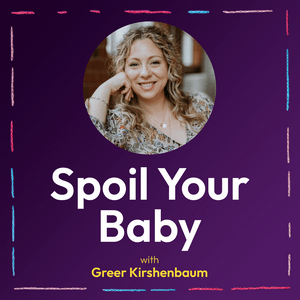
Get the free radio.net app
- Stations and podcasts to bookmark
- Stream via Wi-Fi or Bluetooth
- Supports Carplay & Android Auto
- Many other app features
Get the free radio.net app
- Stations and podcasts to bookmark
- Stream via Wi-Fi or Bluetooth
- Supports Carplay & Android Auto
- Many other app features


Spoil Your Baby
download the app,
start listening.
